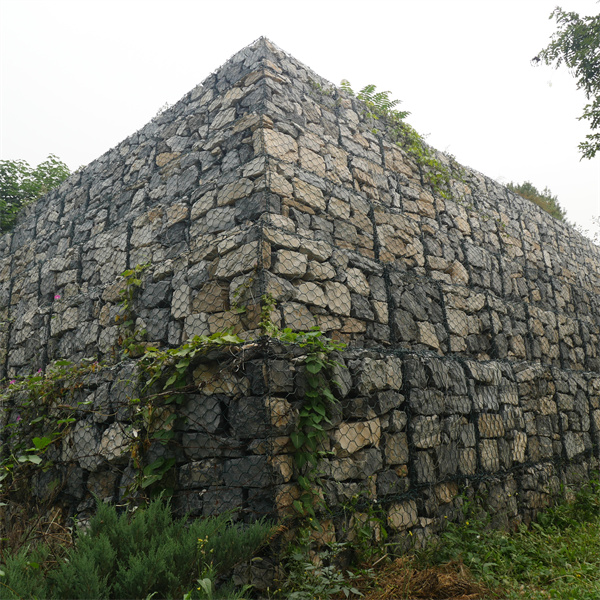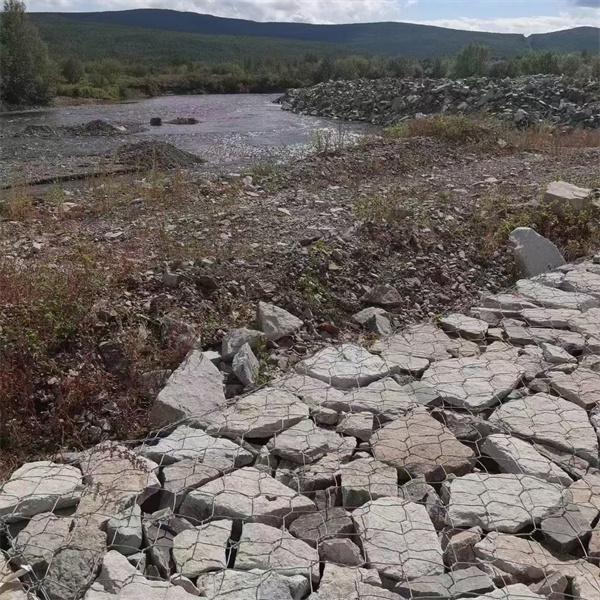ಜುಲೈ . 08, 2025 05:48 Back to list
High Quality Stone Cage Net Leading Stone Cage Net Suppliers & Factories
- Introduction and Definition: What is a Stone Cage Net?
- Market Data & Technical Advantages: Why Choose Modern Solutions?
- Comparative Analysis: Suppliers and Factories Overview
- Customization Options and Design Flexibility
- Real-World Applications: Case Studies and Impact
- Quality Assurance and Certification Standards
- Conclusion: Stone cage net and Sustainable Infrastructure Development

(stone cage net)
Introduction and Definition: What is a Stone Cage Net?
The stone cage net
is a form of welded or woven mesh, typically manufactured from galvanized or PVC-coated steel wire, designed to form structures filled with stones or other sturdy materials. These engineered enclosures, often referred to as gabions, function as retaining structures in infrastructural, landscaping, or hydraulic engineering. The use of stone cage nets dates back to ancient civilizations but has since evolved into a high-precision, industrial product. Today’s engineered solutions benefit from advanced metallurgical science and manufacturing automation, providing superior corrosion resistance, custom sizing, and high load-bearance capacity. With a rapidly growing application spectrum—including river channeling, erosion mitigation, and architectural landscaping—the demand for quality-controlled stone cage net is projected to rise steadily. In 2023, the global market for gabion-based products, including stone cage nets, was estimated at over $2.3 billion, with an expected CAGR of 6.8% through 2028—highlighting their critical role in sustainable infrastructure.
Market Data & Technical Advantages: Why Choose Modern Solutions?
The recent surge in infrastructure and environmental restoration activity is driving substantial innovation in stone cage net technologies. According to the International Organization for Standardization (ISO), premium-grade stone cage nets offer a minimum tensile strength of 380–490 N/mm², outperforming conventional manually-woven counterparts by up to 30% in structural endurance. Leading suppliers employ robotic welding and automatic mesh forming, ensuring wire diameter uniformity and consistent aperture. Additionally, hot-dip galvanization or thermally-bonded PVC coatings extend life expectancy in aggressive environments from 10 years (bare steel) to 40 years (coated mesh), significantly reducing lifecycle costs for governments and contractors. Data from the European Gabion Federation reveal that projects using advanced stone cage netting have decreased hydrological disruption by 43% compared to concrete alternatives, supporting both environmental and economic objectives. Such statistics underline the importance of sourcing from technologically sophisticated manufacturers who maintain rigorous testing and QA protocols.
Comparative Analysis: Suppliers and Factories Overview
Selecting from a myriad of stone cage net suppliers and factories can be challenging due to varying manufacturing standards, material controls, and technical support levels. For procurement professionals, evaluating key parameters—such as mesh uniformity, coating thickness, production capacity, and export experience—is essential. Below is a comparative table highlighting core performance indicators from three leading stone cage net suppliers in Asia and Europe:
| Supplier / Factory | Annual Production (tons) | Wire Coating Options | Mesh Aperture Consistency | Certifications | Export Market Share (%) |
|---|---|---|---|---|---|
| AsiaMesh Industries | 15,000 | Galvanized, PVC, Alu-Zn | ±1.5mm | ISO9001, SGS | 32 |
| EuroGabion Factory | 9,800 | Galvanized, Zinc-Aluminum Alloy | ±2.0mm | CE, BBA, ISO14001 | 27 |
| MegaNet Suppliers | 12,500 | PVC, Galfan | ±1.7mm | ISO9001, TÜV | 21 |
This benchmarking demonstrates that while output volume and export reach are crucial, certifications and wire coating diversity often impact a supplier’s suitability for specific project requirements. Investing in suppliers with verifiable quality control records ensures project longevity and regulatory compliance, while leveraging regional manufacturing hubs can optimize logistics and lead times.
Customization Options and Design Flexibility
Modern stone cage net factories are equipped to deliver a vast range of customized solutions beyond standard mesh rolls and cages. Customization parameters include wire gauge (typically ranging from 2.0mm to 5.0mm), mesh aperture size (from 50x50mm to 120x150mm), overall cage dimension, and joinery method (spiral, lacing wire, or “C” rings). Several manufacturers now offer pre-assembled units or “ready cage” formats, drastically reducing on-site labor by up to 45%.
Surface treatments can be tailored to specific site conditions: for example, marine or high-alkali zones may require triple-layered coatings to extend service life. Additionally, clients can specify eco-friendly materials or modular locking mechanisms to meet green building certifications like LEED or BREEAM. OEM/ODM capacities enable branded labeling and bespoke packaging, addressing the unique requirements of private-label distributors and major contractors alike. For specialized applications such as architectural cladding or acoustic barriers, stone cage nets may be shaped into novel geometries or combined with other structural materials, showcasing the versatility of advanced manufacturing facilities.
Real-World Applications: Case Studies and Impact
Stone cage nets have proven indispensable in a wide array of infrastructure, civil engineering, and landscaping scenarios. One prominent case study is the stabilization of the Meuse River embankments in Belgium, where over 90,000 square meters of galvanized stone cage netting were deployed, resulting in a 37% reduction in flood-induced erosion incidents compared to traditional concrete retainers. This intervention not only enhanced structural safety but also promoted biodiversity by supporting riparian vegetation growth between the stones—fulfilling both engineering and environmental mandates.
In South-East Asia, a coastal highway project subjected to intense monsoonal activity utilized PVC-coated stone cage nets for slope protection. Post-project monitoring revealed maintenance costs dropped by 28% over five years relative to geotextile-only solutions, with no cage structure collapse recorded. In urban landscaping, architects in Barcelona pioneered the use of stone cage nets for terraced gardens, facilitating natural drainage while visually integrating green spaces into the cityscape. Each of these deployments underlines stone cage nets' adaptability and their positive socio-environmental footprint, cementing their value across diverse project contexts.
Quality Assurance and Certification Standards
Quality assurance (QA) mechanisms play a critical role in guaranteeing the reliability and durability of stone cage net products. Top-tier stone cage net factories adhere to globally recognized standards such as ISO9001 for quality management and ISO14001 for environmental performance. Product authentication may include pull-test sampling, corrosion resistance validation (ASTM B117 for salt spray), and mesh uniformity testing. European suppliers may additionally secure CE marking and British Board of Agrément (BBA) certifications for compliance with the most stringent construction standards.
QA documentation—factory test reports, batch traceability, and third-party inspection—offers clients peace of mind and headline risk mitigation. Digital factory control systems are increasingly implemented to record every phase of production, while automated inspection processes document anomalies in wire coating or mesh sizing. These enhanced protocols are indispensable for projects where regulatory approvals or warranty-backed guarantees are required. Certified suppliers further support their products with technical consultation, on-site appraisals, and post-installation maintenance training, reinforcing long-term client partnerships and consistent supply performance.
Conclusion: Stone cage net and Sustainable Infrastructure Development
The contemporary stone cage net market encapsulates a fusion of tradition and innovation, serving as a cornerstone of modern civil engineering and landscape architecture. Through the ongoing efforts of progressive stone cage net suppliers and technologically advanced stone cage net factories, these products now not only deliver structural functionality but also align with sustainable development goals. From technical superiority and quality assurance to large-scale customization and proven application efficacy, stone cage nets empower engineers and planners to address the complex demands of resilient infrastructure and environmental stewardship. As research and investment in advanced materials and manufacturing deepen, the role of certified stone cage net providers will become increasingly central in shaping landscapes and safeguarding communities worldwide.

(stone cage net)
FAQS on stone cage net
Q: What is a stone cage net?
A: A stone cage net is a mesh wire structure filled with stones and used for retaining walls or erosion control. It is also known as a gabion. The net provides strong support in construction and landscaping projects.Q: How can I find reliable stone cage net suppliers?
A: You can find reliable suppliers by searching online directories, trade platforms, or industry exhibitions. Check for supplier credentials and customer reviews. It's advisable to compare several suppliers for the best quality and price.Q: Do stone cage net factories offer customization?
A: Yes, most stone cage net factories offer customization in mesh size, wire thickness, and dimensions. Discuss your project requirements before placing an order. Customization ensures the net fits your specific application.Q: What are the main advantages of buying directly from a stone cage net factory?
A: Buying directly from a factory usually offers lower prices and better quality control. You can also request customized specifications. Direct communication streamlines order processes and delivery times.Q: Are stone cage nets suitable for both residential and commercial use?
A: Yes, stone cage nets can be used in residential gardens as well as large commercial projects. They are versatile, durable, and eco-friendly. Their applications range from decorative features to structural reinforcements.-
Visualizing Gabion 3D Integration in Urban Landscapes with Rendering
NewsJul.23,2025
-
The Design and Sustainability of Gabion Wire Mesh Panels
NewsJul.23,2025
-
The Acoustic Performance of Gabion Sound Barriers in Urban Environments
NewsJul.23,2025
-
Mastering the Installation of Galvanized Gabion Structures
NewsJul.23,2025
-
Gabion Boxes: Pioneering Sustainable Infrastructure Across the Globe
NewsJul.23,2025
-
Custom PVC Coated Gabion Boxes for Aesthetic Excellence
NewsJul.23,2025
-
Installation Tips for Gabion Wire Baskets in Erosion Control Projects
NewsJul.21,2025






